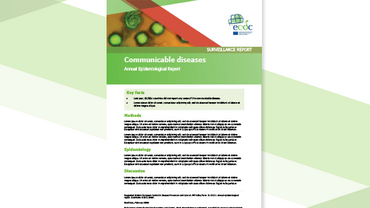Chlamydia control in Europe: Qualitative evaluation of the impact of the 2009 ECDC guidance
This technical report describes the evaluation of the impact of the 2009 guidance document on policymaking in Member States and presents recommendations for a revised version of the guidance.
In 2011, ECDC commissioned a programme of work to improve knowledge about the impact of chlamydia and chlamydia control in Europe. The aim of this project was to critically review and update the scientific evidence on the epidemiology of chlamydia, the cost-effectiveness of screening, chlamydia prevention, and chlamydia control activities in EU/EEA Member States.
Executive Summary
What makes a good guidance document Did it reach the people it was intended for, and: did they use it in their work Questions like these have been addressed in a review of the impact of ECDC’s 2009 chlamydia control guidance in order to inform a new version of it.
The review describes the evaluation of the guidance Chlamydia control in Europe which was intended for policymaking in EU Member States and presents recommendations for a revised version of the guidance.
A chlamydia control survey conducted in 2012 demonstrated a good awareness of the guidance in the EU Member States (24 of 26 responding countries) but dissemination was only reported by 33% (9/27) of countries, and the extent of this dissemination varied. Almost half of countries reported using the guidance to improve chlamydia control (11/25) but this was not linked to the level of chlamydia control activity or a change in the assigned level of chlamydia control activity between the two surveys. The guidance was reported to have been used in advocacy by 29% of respondents (7/24).
Since the publication of the guidance document in 2009, chlamydia control in Europe improved: in 2012, only 21% (6/28) of the Member States reported no organised prevention and control activities (2007: 41%) and most countries had a surveillance system in place.
The review concludes with evidence-based recommendations for the revision of the guidance.
What is chlamydia
With more than 385 000 notified cases in 2012, chlamydia is the most commonly reported sexually transmitted infection across Europe caused by the Chlamydia trachomatis bacterium. Sexually active young people are most at risk of chlamydia, and women below 24 years of age have the highest number of infections in Europe (65% in 2012). Control of genital chlamydia focuses on reducing sexual risk behaviour, condom use, early diagnosis, and effective management of sexual partners in order to break the chain of transmission.





